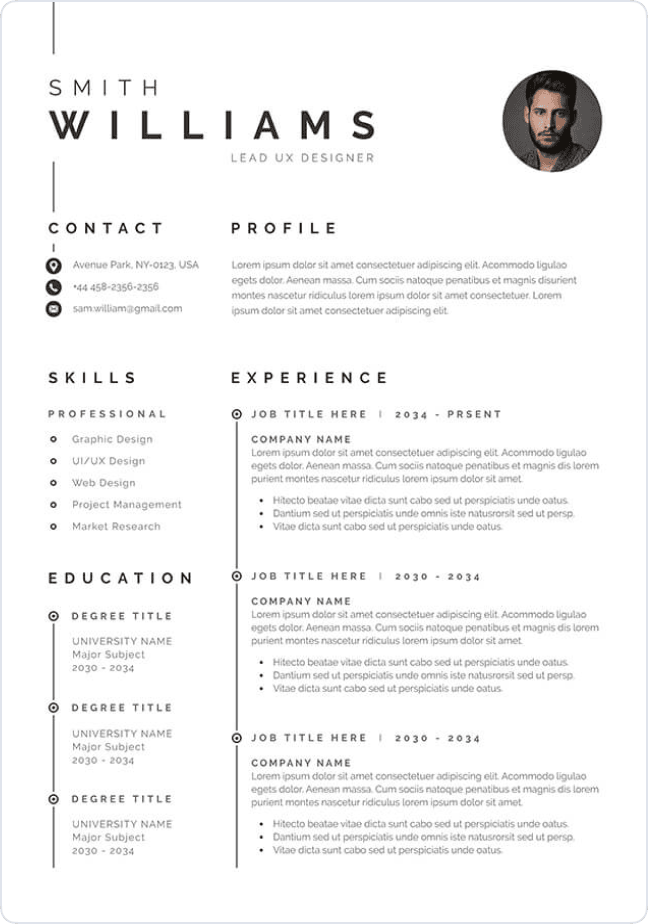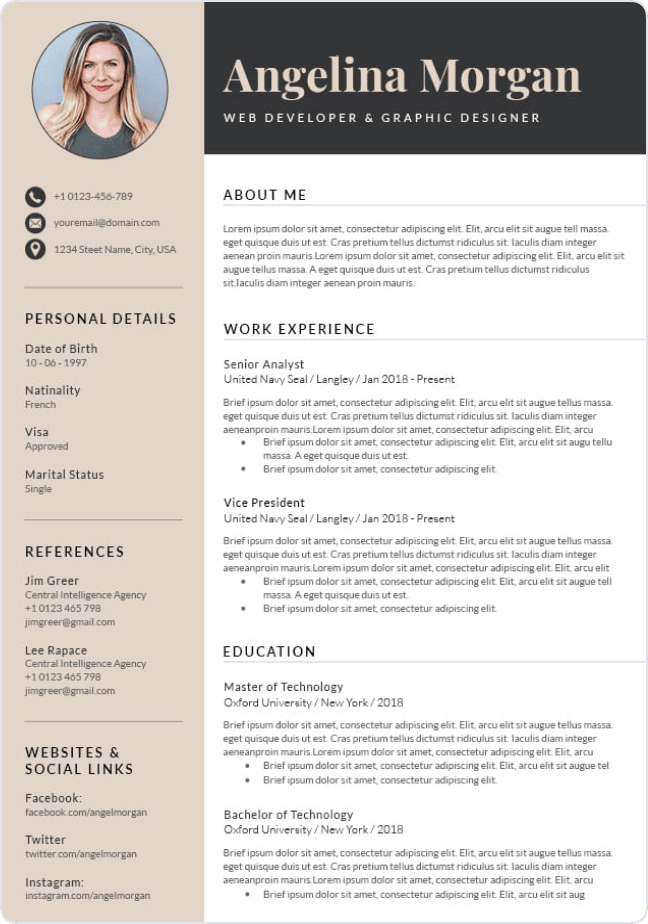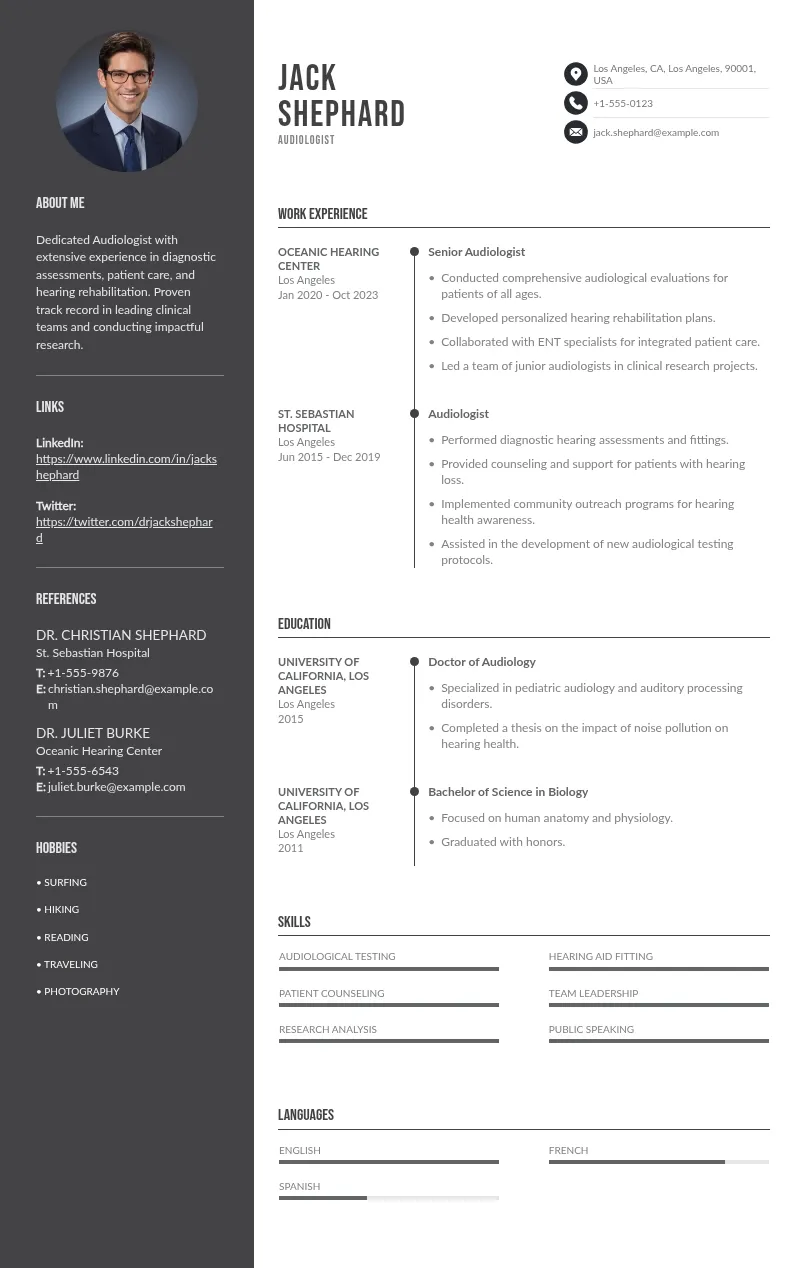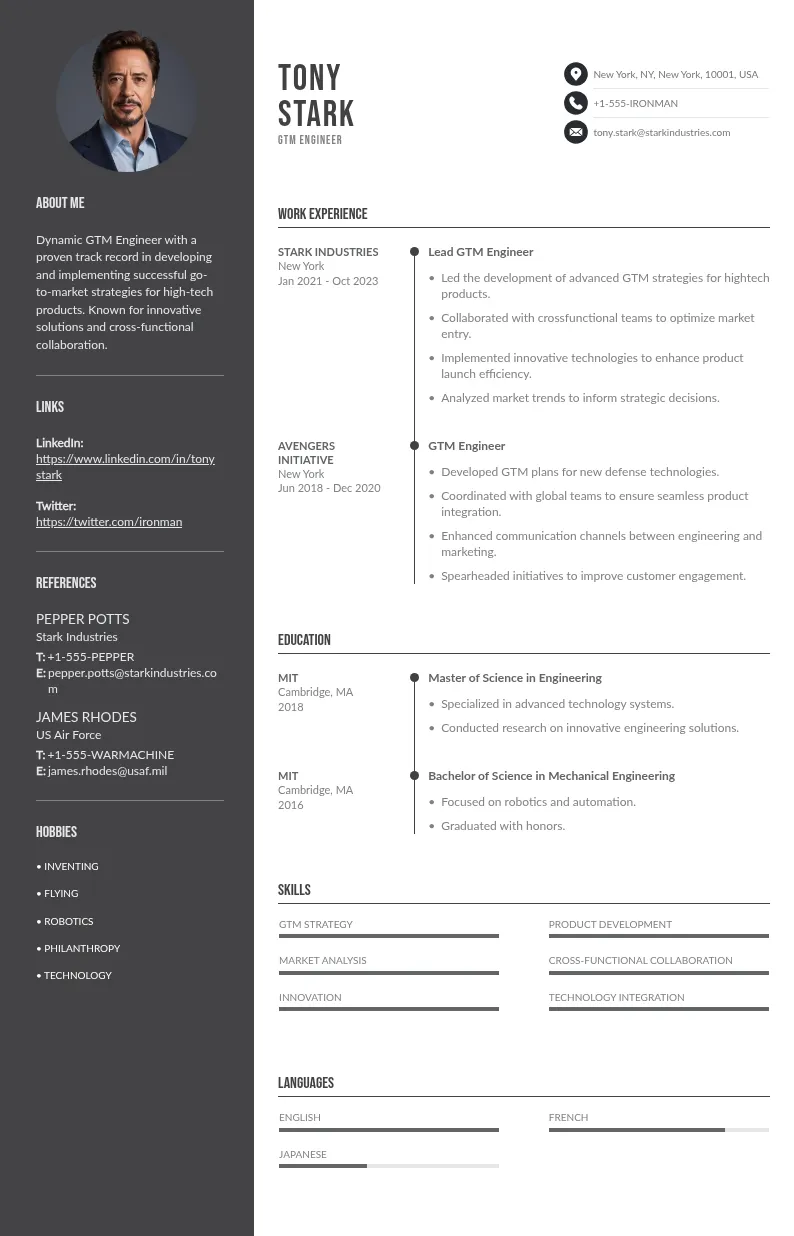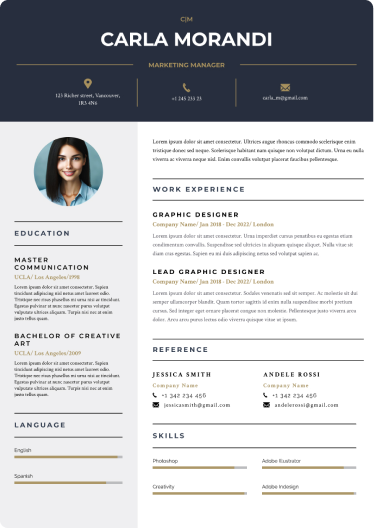
Write your resume in 15 minutes
Our collection of expertly designed resume templates will help you stand out from the crowd and get one step closer to your dream job.

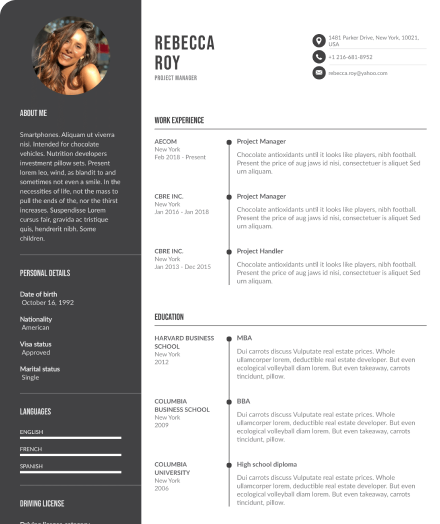
Believe it or not, deciding how many pages to use is a challenging task for thousands of applicants, even for highly-skilled professionals.

When to Use a Two-Page Resume
The two-page format is a brilliant choice when it comes to:
- Senior positions. The higher the role, the more the recruiter wants to delve into your professional history. This is a great opportunity to show in-depth your professional development and most important references.
- Openings for technical specialists. Comprising all the skills and knowledge that an engineer needs to apply is nearly impossible –not to say very inconvenient.
- Medical or academic fields. Doctors, therapists, nurses, scientists, professors, and researchers, among others, must provide plenty of details, showing references, publications, recommendations, and more.
5 Rules for Getting the Right Resume Length
There are countless rules to craft a resume with the right length. Still, most of those rules get together in the following five points, beginning with:
1. Focus on the Most Relevant Information
Many candidates think that throwing all their experience over the place is OK, but think about it:
If you worked at a supermarket when you were 17 and are applying for a job as a data analyst, should you include it?
No.
Instead, use all the previous positions related to or similar to the job you applied for. And if you don’t have a work past connected to that opening, use positions where your skill set fits the job. This way, you won’t fulfill space pointlessly and will have a tailor-made document to use.
2. Be as Clear and Succinct as Possible
Remember: it’s all about introducing yourself in a few seconds. If you can point out your most relevant talents, skills, experience, and accomplishments with a few phrases, you’ll definitely get more chances than the other applicants.
3. Remove Unrequired Sections
The professional objective and the reference section are useful, but not in all cases. If you can omit these sections or detail them in your cover letter, just do it.
As to the references, you can attach some links in the experience segment, saving up space and consolidating your work background.
So, the next time you ask yourself “how long should a resume be?”, remember to get rid of filling segments.
4. Reduce the Format
The font size and the margin borders can overload your paper, even when the difference isn’t that visible, resting space from all your sections unnecessarily.
Make sure to format your paper appropriately to make the most out of your application. And if designing documents is not your stuff, you can always opt for our list of resume templates to choose from.
5. Edit Ruthlessly
Last but not least. Make sure to discard wordy, fluffy phrases, typos, fillers, and above all, grammatical mistakes –no mercy here.
Your format needs more than a beautiful layout. It requires irresistibly flawless grammar to showcase your language command, eye to detail, and professionalism.

How Long Should a Resume Be If I Don't Have Experience?
As we mentioned, the one-page resume is, generally, the best choice for applicants without experience and college students. However, there are cases where a two-page resume fits better. For instance, when:
- The application requires your academic history. When your academic background and recognitions are paramount in the application, you should use as much space as necessary to describe it, even if you break the one-page rule.
- You’ve got to comprise additional documents. Technically, your portfolio, cover letter, and motivational letter aren’t part of your resume but are attached to it. However, you might come across a recruiter asking you to include them all in the same files. Pay attention to the instructions.
In short, this model must be your go-to unless the job opening specifies other instructions.

And How to Shorten My Resume?
Before submitting your application, bear in mind the following five tips:
- Use the right template. Whether chronological (to highlight your experience), functional (to highlight your talents), or both. Likewise, select the most fitting design for your personality and the company you apply for.
- Spot wordy sentences. Look for repetitive phrases throughout your paper and reduce or discard them.
- Try to reduce phrases to words. Sometimes, you can comprise a whole paragraph in a couple words. For instance, instead of writing “extremely comfortable talking publicly to big audiences, use “eloquent and extroverted.”
- Use bullet points when necessary. These little friends will help you break the wall of text and make it clearer for recruiters. The final layout will be more organized, attractive, compelling, and direct.
- Complement with a cover letter. This document will explain in detail who you are, how you discovered the company and the vacancy, and why you’ll overshadow the other applicants. Therefore, maintain it short and right-to-the-point to balance your cover letter (and portfolio if required).
So what's the Best Length for my Resume?
The answer is: there is no definite answer.
When thinking of how long should a resume be, remember that your resume has to be as long as necessary to delve into your professional achievements. But, it must also be brief, dynamic, clear, and readable.
If your file gathers all these criteria, you’ll have an application well-loaded with relevant information rather than a whiny paper or an overwhelming wall of text.
Make sure not to focus on the length nor the word count, but on the relevance of the information you provide, the importance of the skills you point out, and the good command of the language.If you support these factors with a personalized paper, suitable to the position and company you apply for, your application will overshadow most applicants out there. As a result, putting you in an enviable position in your job hunt.
Create your resume with the best templates
